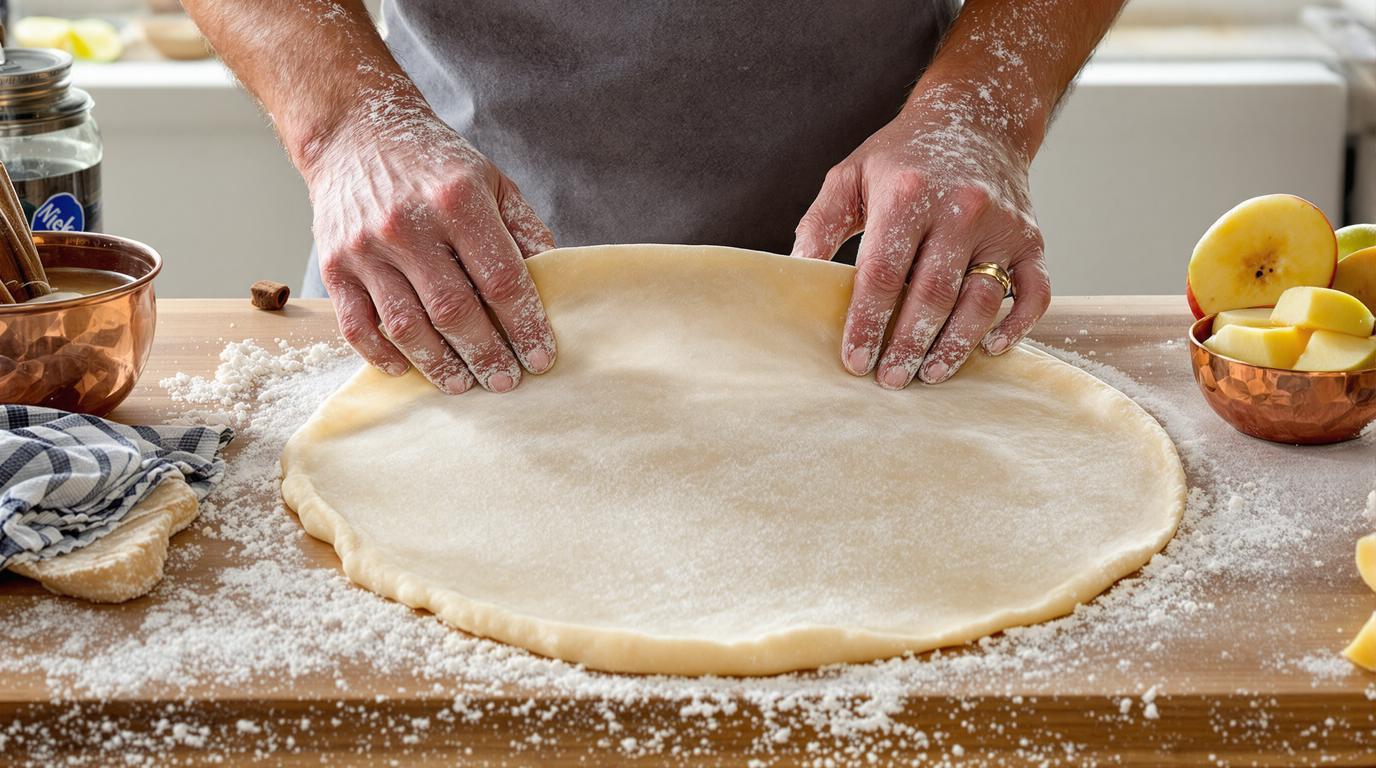The first time I stretched strudel dough until it was nearly transparent, I felt like I’d unlocked a secret culinary superpower. After years of professional cooking, there’s still something magical about transforming simple flour and water into that gossamer-thin sheet that defines authentic apple strudel. This Austrian-German classic isn’t just a dessert – it’s a meditation on patience and precision that rewards you with buttery, flaky layers encasing perfectly spiced apples. While many home cooks shy away from hand-stretched dough, I’m going to show you how this 17th-century technique is absolutely achievable in your kitchen.
The Story 📖
Born in Vienna around 1696, apple strudel quickly became the crown jewel of Central European baking. While working in a small mountain restaurant in Austria, I learned the technique from an 80-year-old grandmother who could stretch dough across an entire table using just her knuckles. “The secret,” she told me, “isn’t strength but surrender – let the dough do what it wants.” This delicate balance between control and release creates those characteristic whisper-thin layers that shatter gloriously when your fork breaks through.
Ingredients Spotlight 🧪
The beauty of strudel lies in its humble ingredients transformed through technique:
- Dough: 2½ cups (300g) all-purpose flour, 1 egg, 2 tablespoons sunflower oil, 2 tablespoons apple cider vinegar, pinch of salt, ⅓ cup (80ml) warm water
- Filling: 2 pounds (900g) tart apples (Granny Smith or Braeburn), 6 tablespoons (75g) granulated sugar, 2 teaspoons ground cinnamon, ⅓ cup (50g) raisins, 2 tablespoons dark rum, ½ cup (50g) toasted breadcrumbs, 7 tablespoons (100g) melted butter, juice of 1 lemon
Step-by-Step Guide 📝
1. Make the dough: Combine flour and salt in a bowl. Make a well, add egg, oil, and vinegar. Mix while gradually adding warm water until a soft dough forms. Knead for 10 minutes until smooth and elastic. Form into a ball, brush with oil, cover, and rest for 1 hour at room temperature.
2. Prepare the filling: Soak raisins in rum for 30 minutes. Core, peel and thinly slice apples, then toss with lemon juice, sugar, and cinnamon. Toast breadcrumbs in 2 tablespoons butter until golden.
3. Stretch the dough: Cover a large table with a clean cotton tablecloth. Dust with flour. Roll dough into a rectangle, then gently stretch using the backs of your hands. Work from the center outward, gradually stretching until nearly transparent enough to read newspaper through it (about 24×36 inches).
4. Assemble: Brush stretched dough with melted butter. Sprinkle toasted breadcrumbs over two-thirds of the dough. Distribute apple mixture evenly over breadcrumbs, leaving a 2-inch border. Add drained raisins. Fold in the short sides, then using the tablecloth, gently roll the dough into a log.
5. Bake: Transfer to a parchment-lined baking sheet, brush with remaining butter. Bake at 400°F (200°C) for 10 minutes, then reduce to 350°F (180°C) for 30 minutes until deeply golden.
Expert Techniques 🛠️
The true magic happens in the stretching. I’ve found that warming your hands under hot water before handling the dough prevents tears. Work methodically around the perimeter, using your knuckles and the backs of your hands, never your fingertips. If you tear the dough, don’t panic – simply pinch it back together.
Chef’s Note: When I’m stretching strudel dough, I remove all rings and watches. Even the smoothest jewelry can catch and tear that delicate membrane. Work in silence for a few minutes – you’ll actually hear the dough stretching if you listen carefully.
For the perfect filling consistency, I mix my apple slices and sugar just 10 minutes before assembly – this creates just enough juice without making things soggy. The breadcrumbs are non-negotiable; they’re your insurance policy against a soggy bottom.
Presentation & Pairing Ideas 🍽️
Serve warm slices with a dusting of powdered sugar and either vanilla-scented whipped cream or a traditional vanilla sauce (essentially a pourable custard). For a truly Austrian experience, pair with a glass of Eiswein or late-harvest Riesling – the bright acidity balances the rich pastry perfectly.
For a seasonal autumn variation, add 2 tablespoons of roasted pumpkin puree and a pinch of nutmeg to the filling. In summer, reduce the cinnamon and add 1 cup of fresh berries to the apple mixture.
This strudel is more than just a recipe – it’s a connection to generations of bakers who’ve mastered this dance of flour, fruit and butter. The techniques you’ll learn here will transform your understanding of pastry. Remember, perfection isn’t the goal – it’s the willingness to stretch beyond your comfort zone. Just like the dough itself, sometimes you need to surrender to the process to create something truly extraordinary.
